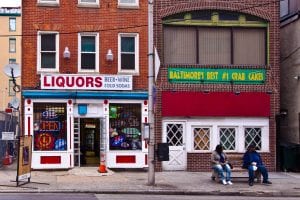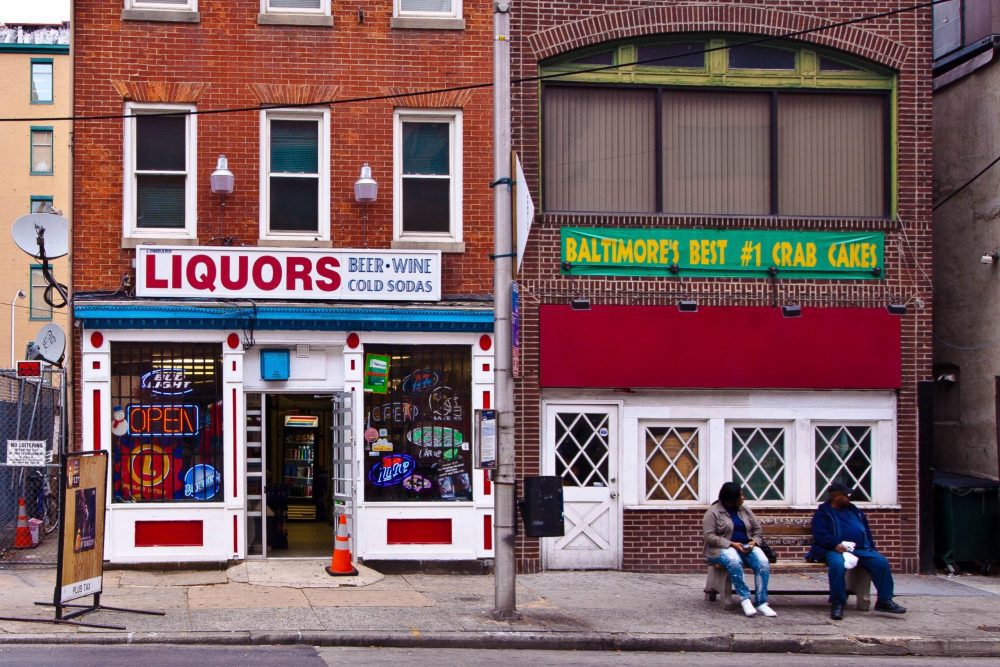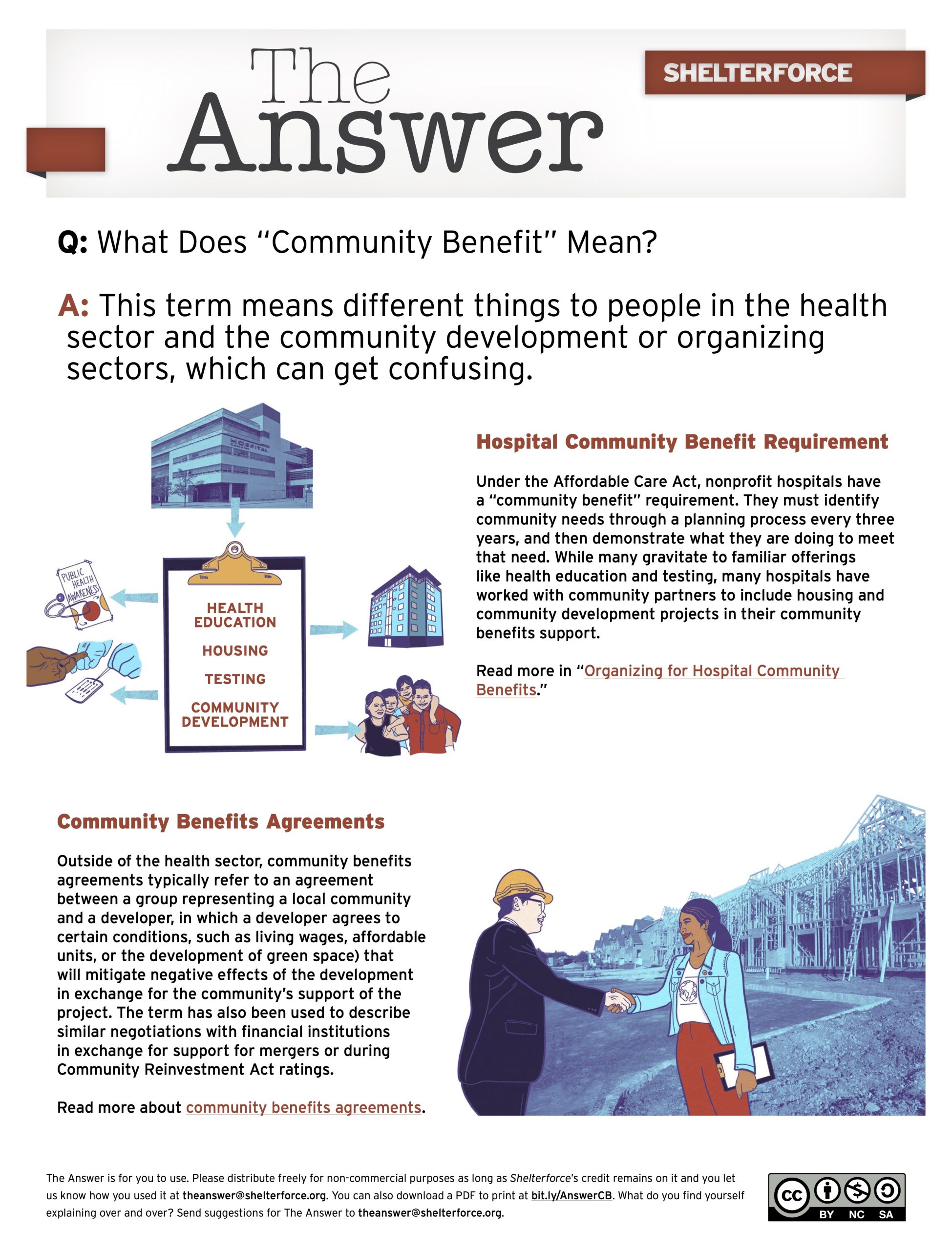
Photo by flickr user Jens, CC BY-NC-ND 2.0
It was at least a decade ago when researchers from Johns Hopkins Bloomberg School of Public Health turned their attention to Baltimore’s effort to revise its decades-old zoning code. Many research papers, meetings, and draft revisions later, the results of the policy change they brought about—a reduction in the number of liquor stores in Baltimore’s residential neighborhoods—will finally take effect on June 5.
Research has shown that there is a definitive link between the number of liquor outlets and a city’s violent crime rate. Will the communities surrounding the closed stores actually experience the desired outcome? That will probably take another few years to determine. Still, the Baltimore story shows how innovative ideas can gradually be translated into real regulations. It also illustrates that even when the desired outcomes occur, members of the community can be negatively affected.
How It Began
According to Laurie Feinberg, assistant director of Baltimore’s planning department, it all started when a Johns Hopkins public health graduate student attended an open meeting of the city’s zoning advisory committee. The group was one component of a long process of replacing Baltimore’s zoning ordinance, last updated in 1971.
“She came in and said, ‘Wait a second, the zoning code is supposed to be about public health, safety, and welfare—where’s your stuff about health?’” remembers Feinberg. It was 2008 or 2009, and the student was there mostly as a citizen—but one with a particular bent.
The student talked to her colleagues and professors, who got in touch with Feinberg and her coworkers. “We said, ‘Gee, that makes sense,’ and we started working together,” says Feinberg.
The academics had a bit of an ulterior motive. “We started mostly because of an interest in the methodology of a health impact assessment,” recalls Rachel Thornton, a professor at the public health school. Still relatively new in the United States at that time, a health impact assessment (HIA) is used to evaluate the health effects of a particular project or policy. And the researchers were eager to try it out.
Together with the city’s chief epidemiologist (a Johns Hopkins graduate), Thornton and others—including Amelia Greiner, the student who first walked into that public meeting—applied for a grant from the Robert Wood Johnson Foundation to do an HIA on the city’s newly drafted zoning code.
‘I can say we saw a steady reduction in crime in those areas where we shuttered those establishments.’
The result was Zoning for a Healthy Baltimore, an 80-page report the researchers released in 2010. Most of the recommendations covered the now-familiar ground known as the social determinants of health, things like increasing residents’ access to healthy food and bolstering walkability in neighborhoods. But one element of the HIA was a little unusual: the report recommended a reduction in the concentration of liquor stores in the city as a way of improving public health and welfare.
It wasn’t a random concept. Research since the 1990s has illustrated the link between liquor establishments and crime. In 1995, for example, a study by researchers from the University of Southern California established that each new liquor outlet in cities in Los Angeles County contributed an average of 3.4 violent crimes per year.
Baltimore, which has about 300 liquor outlets, has long struggled with serious crime. In 2010, the city experienced 224 reported homicides and over 9,300 incidents of violent crime. Some residents’ groups had been clamoring for years to have fewer liquor stores.
One such group was the Coldstream-Homestead-Montebello Community Corporation, which had been trying to reduce the number of liquor stores in the working-class community since 2007. In some parts of the neighborhood, says Executive Director Mark Washington, there’s a liquor store at every intersection—and the stores provide cover for individuals hanging out in front and possibly dealing drugs, making police officers’ jobs more difficult, he says.
“We’re not against liquor stores,” says Washington, “What I have a real issue with are establishments that don’t necessarily make themselves part of the effort of the community to rebuild. We’re against establishments that lead to the detriment of the neighborhood.”
A few years ago, the organization managed to close three stores that were operating under false licenses. “I can say we saw a steady reduction in crime in those areas where we shuttered those establishments,” says Washington.
City planners took seriously the public health report’s recommendations about liquor stores. “It was sort of a whole new field,” Feinberg recalls. Mayor Stephanie Rawlings-Blake, the health commissioner, and the head of the zoning commission were all fully in favor of the proposition, so the zoning commission moved forward to write it into the code.
At that time, the city had a number of liquor stores in residential neighborhoods that weren’t supposed to be there but had been grandfathered into the 1971 ordinance. Others were abusing a loophole in the old code by calling themselves “taverns”—that is, on-premise drinking establishments, which are regulated less strictly—even though they were actually just regular liquor stores.
In response, says Feinberg, “We ended the grandfathering. [And] we decided to end that loophole.” Ultimately, about 100 liquor stores were affected, roughly one-third of the city’s total. Two years from the code’s implementation, the store owners would lose their liquor licenses. The city has promised to help them shift to a new business—groceries, say, or dry cleaning—with interest-free loans.
Of course, it wasn’t quite that simple. Almost 90 percent of the affected liquor stores were owned by Korean Americans; aided by the Korean-American Grocers Association (KAGRO), they packed public meetings to push back against the threat to their livelihoods. And the Maryland State Licensed Beverage Association initially refused to cooperate, arguing that only liquor boards established by the state government had the right to regulate liquor licenses.
But in 2014, another Johns Hopkins researcher, Jacky Jennings, used some of Thornton’s policy findings to provide a quantitative analysis; her study demonstrated that every new liquor outlet brought a 2.2 percent increase in the number of violent crimes in the city. And the case for closing the nonconforming stores grew.
The new ordinance wound its way through the channels of policy and politics. “By the time it got to the city council, there wasn’t as much backlash,” says Feinberg. In December 2016, the council approved the new code. But the affected liquor store owners have until June of this year to change or shut down. Some owners pleaded their case individually with their councilmembers and were rezoned, but about 75 will lose their liquor licenses.
The Next Chapter
A few store owners have changed their businesses, but many others don’t quite get what’s about to happen to them, says Mario Chang, KAGRO’s president. “There are a lot of mom and pop owners and some of them have been there for 20 years, 30 years. These businesses were their retirement,” says Chang. “They don’t really understand about the closing.” Starting over will be hard for many of them.
‘You can’t just take a large sum of people and close them down without looking at individual communities.’
To Chang and many others, the situation seems deeply unfair. “You can’t just take a large sum of people and close them down without looking at individual communities,” he says. After all, some of the store owners tried to be good neighbors and had the support of their neighborhoods. “I understand what the city was trying to do, but I didn’t think they went about it the right way.”
Meanwhile, city officials are moving on to other issues. Feinberg and other city officials are still collaborating with Johns Hopkins researchers; among other projects, they plan to examine the impact of various elements of the new zoning code.
Thornton says the process was an education for her. “As a researcher, my interest is not just in bringing evidence to bear on the policy-making process, but in following it through to evaluate how it works, and whether it does,” she says.
Yes, there’s strong evidence linking alcohol outlets and violent crime. But, she adds, “There’s people involved on every side. There’s the scientific inquiry process, and then there are implications for the real world. Things are more complicated than they seem at first glance.”






Comments